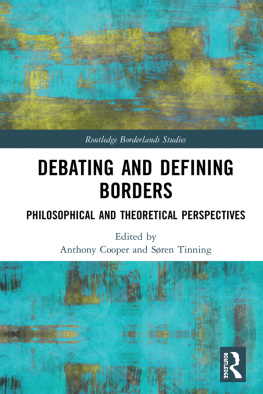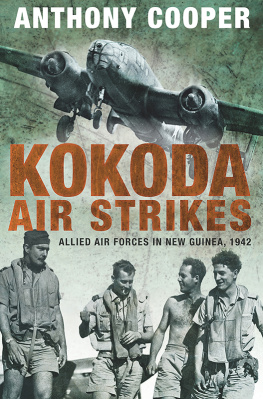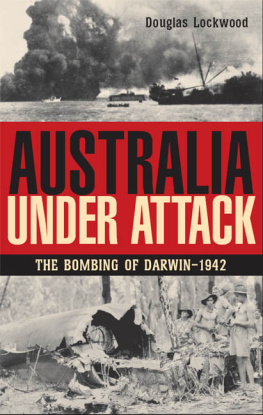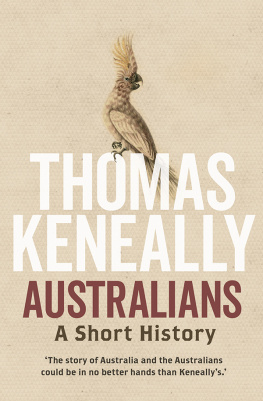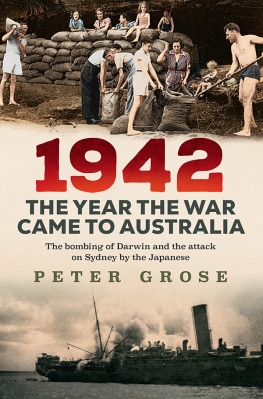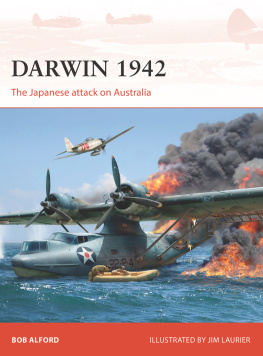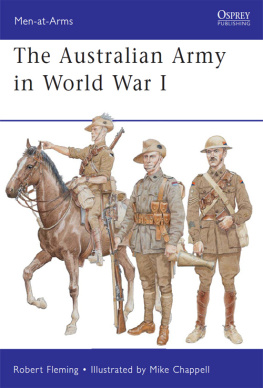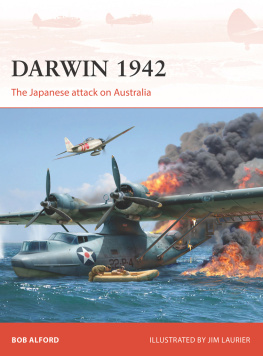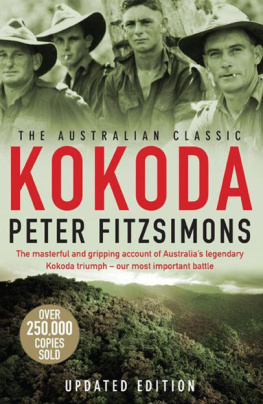ANTHONY COOPER is a Brisbane school teacher. He is a former glider pilot instructor, has a PhD on German aviation history and is the author of HMAS Bataan, 1952 (UNSW Press, 2010).
His website contains a glossary and further materials that may be of interest to readers.
A typical 1 Fighter Wing Spitfire pilot: 54 Squadrons F/Sgt CA Studley clambers out of the cockpit of Spitfire AR564 after a false alarm scramble on 25 July He has left his flying helmet draped over the gunsight and his parachute in the seat bucket. AWM Negative 054794
This book is dedicated to that anonymous army of clerks,
fitters, riggers, armourers, repairers, mechanics, drivers, orderlies,
operators and controllers without whom defeat was assured.
-
First published in Australia in 2011 by New South Publishing,
University of New South Wales Press Ltd, Sydney NSW 2052
Reprinted in this format in 2013 by
PEN & SWORD AVIATION
An imprint of
Pen & Sword Books Ltd
47 Church Street
Barnsley, South Yorkshire
S70 2AS
Copyright Anthony Cooper, 2011, 2013
HARDBACK ISBN: 978 1 78346 188 2
PDF ISBN: 978 1 47383 123 0
EPUB ISBN: 978 1 47383 007 3
PRC ISBN: 978 1 47383 065 3
The right of Anthony Cooper to be identified as Author
of this work has been asserted by him in accordance with
the Copyright, Designs and Patents Act 1988.
A CIP catalogue record for this book is available from the British Library
All rights reserved. No part of this book may be reproduced or
transmitted in any form or by any means, electronic or mechanical
including photocopying, recording or by any information storage and
retrieval system, without permission from the Publisher in writing.
Printed and bound in England by CPI Group (UK) Ltd, Croydon, CR0 4YY
Pen & Sword Books Ltd incorporates the Imprints of Aviation, Atlas,
Family History, Fiction, Maritime, Military, Discovery, Politics, History,
Archaeology, Select, Wharncliffe Local History, Wharncliffe True Crime,
Military Classics, Wharncliffe Transport, Leo Cooper, The Praetorian Press,
Remember When, Seaforth Publishing and Frontline Publishing
For a complete list of Pen & Sword titles please contact
PEN & SWORD BOOKS LIMITED
47 Church Street, Barnsley, South Yorkshire, S70 2AS, England
E-mail:
Website: www.pen-and-sword.co.uk
Acknowledgments
My thanks go to Jane Murphy, Gary Conwell and Bill Tainsh for reading the manuscript, and to the National Archives of Australia and the Australian War Memorial for providing such user-friendly access to a national treasure: our archives. Thanks also to Lex McAulay for his corrections, suggestions and encouragement, to Christopher Shores for his kind provision of those old Air Classics articles, and to Trudy Cooper for producing two nice maps.
Without the generosity, respect and love given so unstintingly by Jane, Charlotte and Elizabeth, this book could never have been written.
The NWA battle front
Trudy Cooper
Darwin combat area
Trudy Cooper
Introduction
Many Australians are aware of the great bombing raid that struck Darwin on 19 February 1942, but few are aware of what followed. For almost two years, the airspace over north-west Australia was routinely penetrated by Japanese raids, a total of more than 70 being tallied against targets that included not only the area around Darwin, but places further along the coast such as Broome, Wyndham, Drysdale Mission (present-day Kalumburu) and Millingimbi Island. The Japanese air offensive extended as far west as the Pilbara region in Western Australia, as far south as Katherine and as far east as Arnhem Land, on the western edge of the Gulf of Carpentaria.
The first raid occurred in February 1942 and the last in November 1943, so the campaign was broadly of two years duration. Within this timeframe, the Japanese waged two daylight raiding campaigns, one in each of the respective dry seasons: MarchAugust 1942 and MarchSeptember 1943. The 1942 campaign of day raids was opposed by the 49th Fighter Group of the United States Army Air Forces (USAAF), while the 1943 campaign was opposed by the Royal Australian Air Forces (RAAF) No. 1 Fighter Wing, made up of both Australian and British units.
This book provides a detailed narrative of the 1943 season of raids, because the defence of Darwin by Commonwealth Spitfire pilots is an important and dramatic national story but one that has been neglected in Australian history writing. The 19 February raid has been the subject of a number of books since the 1960s, whereas the ongoing raids afterwards have received little attention, with the result that the majority of Australians have no idea that they even occurred. Even the 2001 Centenary History of the RAAF avoided any reference to this campaign: despite one of its chapters being entitled The Battle for Australia, this book strangely ignored the only sustained campaign where Australians (along with Americans and Britons) fought and died in the direct defence of the Australian mainland. The original Australian Official History made the best effort to document the 1943 air battles, but has apparently been little read. Only one full-length book exclusively devoted to the topic has ever been published, by Jim Grant, a 1 Fighter Wing veteran. The depth of historical and cultural neglect of 1 Fighter Wings story is shown by the review of Grants book in the RAAF News, which unselfconsciously referred to the 1943 defensive campaign as little known operations over Darwin.
Moreover, 1 Fighter Wings combat record has been shrouded in controversy among the specialist aviation readership ever since Christopher Shores entered the field in the 1970s, for this pioneering British historian used newly accessed Japanese sources to dispute the wings claimed victory tally. In short, the Spitfire pilots were credited at the time with more than 60 Japanese aircraft confirmed shot down throughout the 1943 raids, whereas the research into Japanese records commissioned by Shores supports less than one-third this number of losses. Thus the whole combat reputation of the RAAF and Royal Air Force (RAF) Spitfire units that defended Darwin has unavoidably been brought into question. Most authors, both British and Australian, have responded to this research by ignoring it. However, if indeed the Spitfire pilots did perform poorly in their air combat operations against the Japanese, the historian owes it to posterity to inquire into the reasons for this. This book seeks not only to provide a detailed and textured narrative of a neglected story, but also to analyse problems and to account for failures.
By telling the story of the Australian and British Spitfire pilots in 1943, I hope that Australians will recover a slice of national memory. The 194243 air raids on Darwin constitute the only sustained and intensive direct assault on Australian mainland territory in the whole of World War II indeed, in the whole history of post-1788 Australia. In a war where Australians fought and died overseas, the pilots who lost their lives in this campaign met their deaths in Australian skies, on Australian soil, and in the waters off the Australian coast. It is a good story: in 1943 a small band of inexperienced Australian and British fighter pilots, numbering few more than 100, fought an ongoing air battle in defence of Australias front-line northern base, flying against a formidably skilled and proficient opponent who invariably outnumbered them. If there has ever been a chapter of Australias military history that needs to be rediscovered, this compelling and dramatic story is it.



